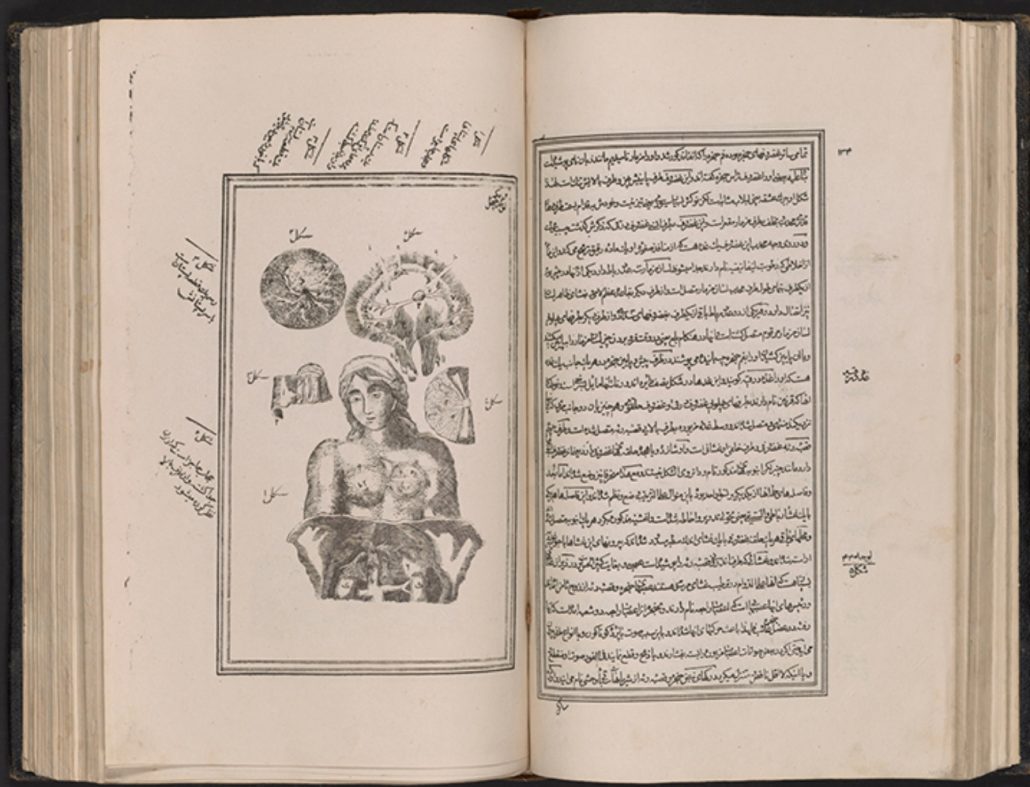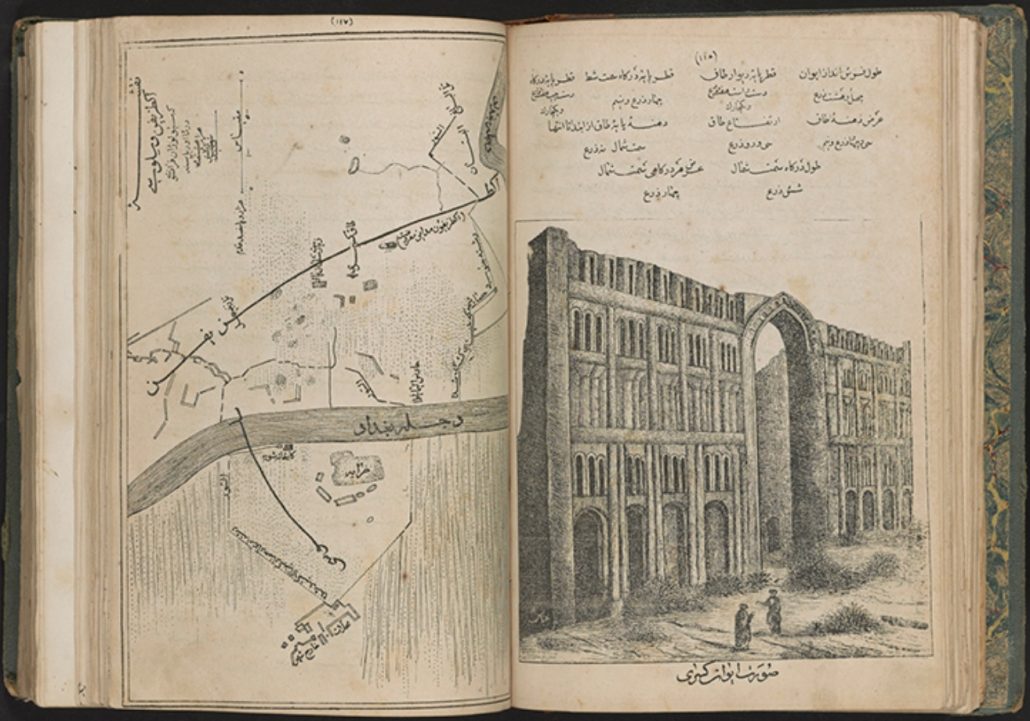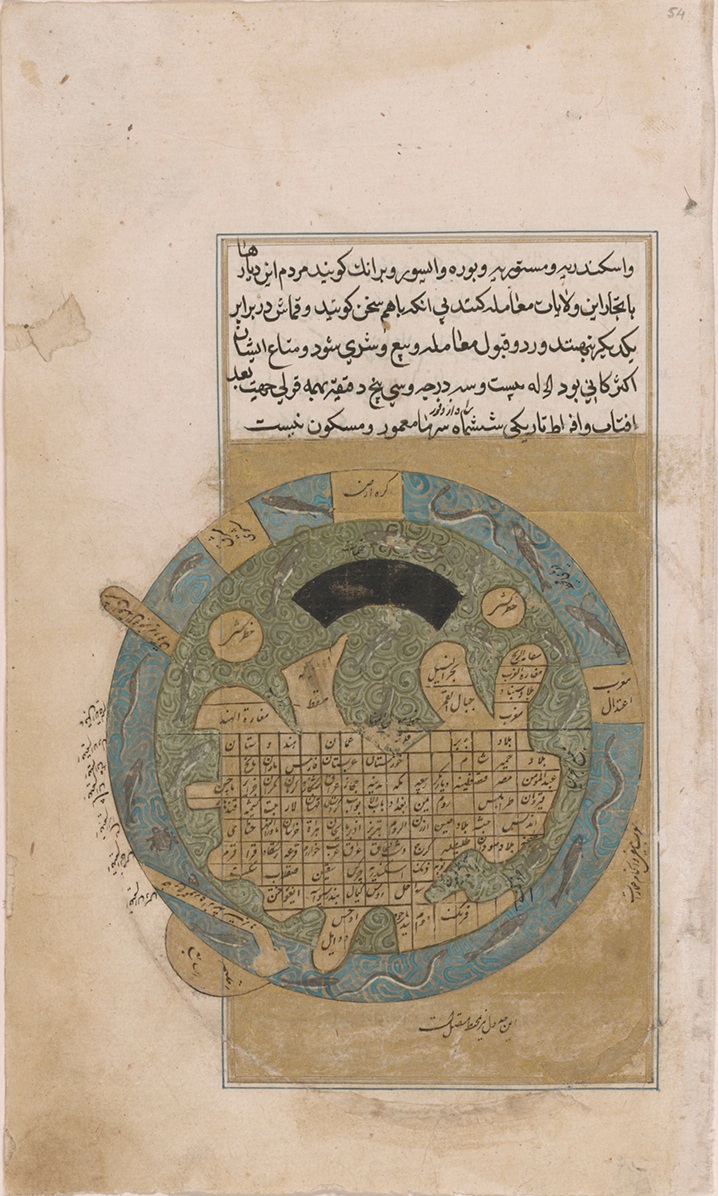The article below “A Thousand Years of the Persian Book” was originally posted on the US Library of Congress website.
=====================================================
Beginning in ancient times Persia has been a center of scientific achievement and was often the conduit of knowledge from China and India in the East to Greece and Rome in the West. Persian-speaking scholars have been active in furthering knowledge in fields of science and technology, such as astronomy, chemistry, anatomy, biology, botany, cosmology, mathematics, engineering, and architecture.
Ancient Sassanid Persia was home to some of the earliest universities and libraries of the ancient world. After the Islamization of Persia (651), middle Persian Pahlavi texts as well as Indian, Chinese, Greek, Aramaic, and Latin scientific texts were translated into Arabic. Although Arabic remains the primary language used for scientific writing in the Islamic world, many scholars have also produced a range of scientific manuscripts and works in the Persian language. The Mughal court in India (1526–1858) became a major center for the production of scientific works in Persian.
Marvels of Creation and Oddities of Existence
Over the centuries many scholars and scientists of Persian origin have written in Arabic, the preferred language for religious and scientific subjects. The iconic Marvels of Creation and Oddities of Existence, originally written in the thirteenth century, is a popular work of cosmography that has been translated into various Islamic languages. The Library holds manuscripts in the original Arabic, as well as Turkish and Persian translations. This sixteenth-century Persian text contains several unique illustrations, including these depictions of mythical creatures.
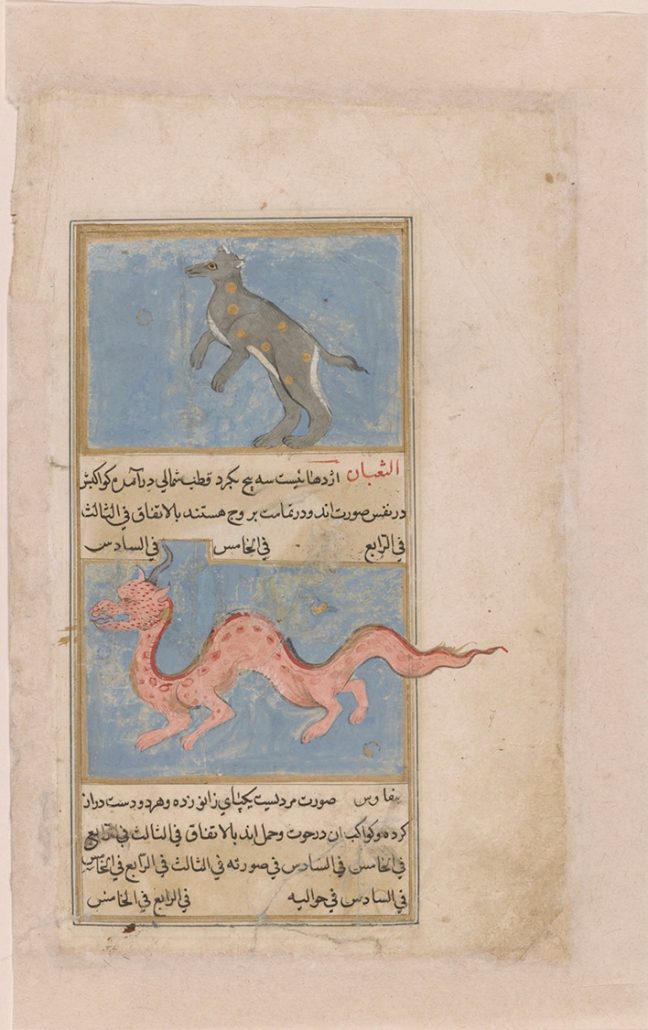
Zakariya ibn Muhammad Qazvīnī. عجايب المخلوقات و غرائب الموجودات (Marvels of Creation and Oddities of Existence). Persia, 1565. Manuscript. Near East Section, African and Middle Eastern Division, Library of Congress (016.00.01).
This sixteenth-century Persian text contains several unique illustrations, including a gold leaf map that clearly demonstrates how the world was viewed in the medieval Islamic period.
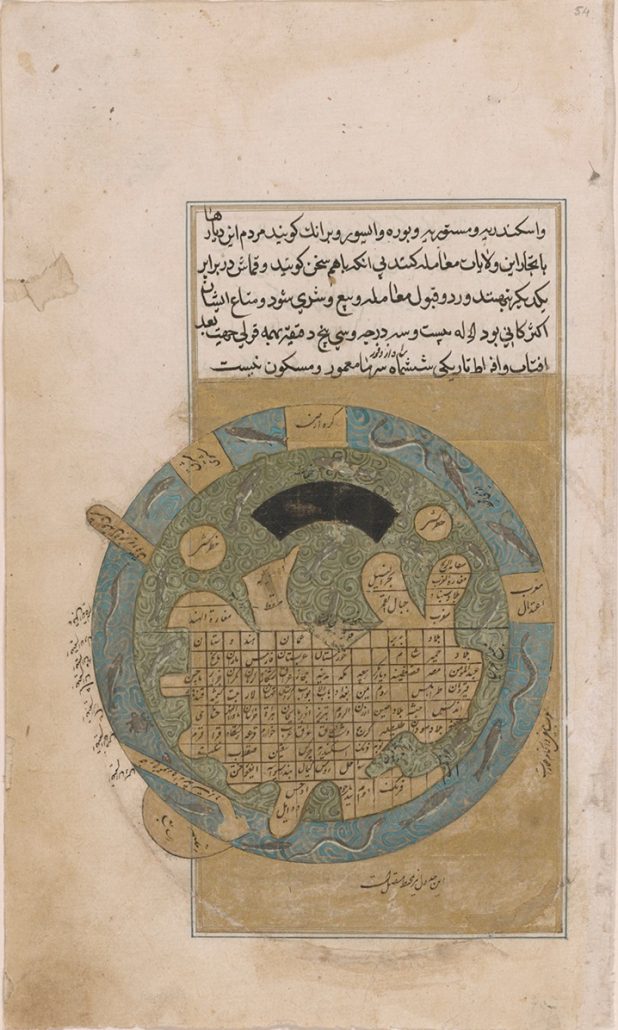
Zakariya ibn Muhammad Qazvīnī. عجايب المخلوقات و غرائب الموجودات (Marvels of Creation and Oddities of Existence). Persia, 1565. Manuscript. Near East Section, African and Middle Eastern Division, Library of Congress (016.00.01).
The Book of Indian Castes and Kinsfolk
In India from the sixteenth to the nineteenth centuries, during the reign of the Mughal court and the subsequent British Raj period, many manuscripts were written in Persian. The manuscript on display, illustrated in vibrant colors and detailing the distinguishing characteristics and customs of India’s various castes, religious communities, and the trades and technologies of each group, is by James Skinner (1778–1841). The son of a Scottish lieutenant colonel and an Indian Rajput princess, Skinner was fluent in Persian and wrote extensively in the language. His manuscript portrays professions ranging from surgery to papermaking with miniature paintings produced primarily by Mir Khalan Khan.
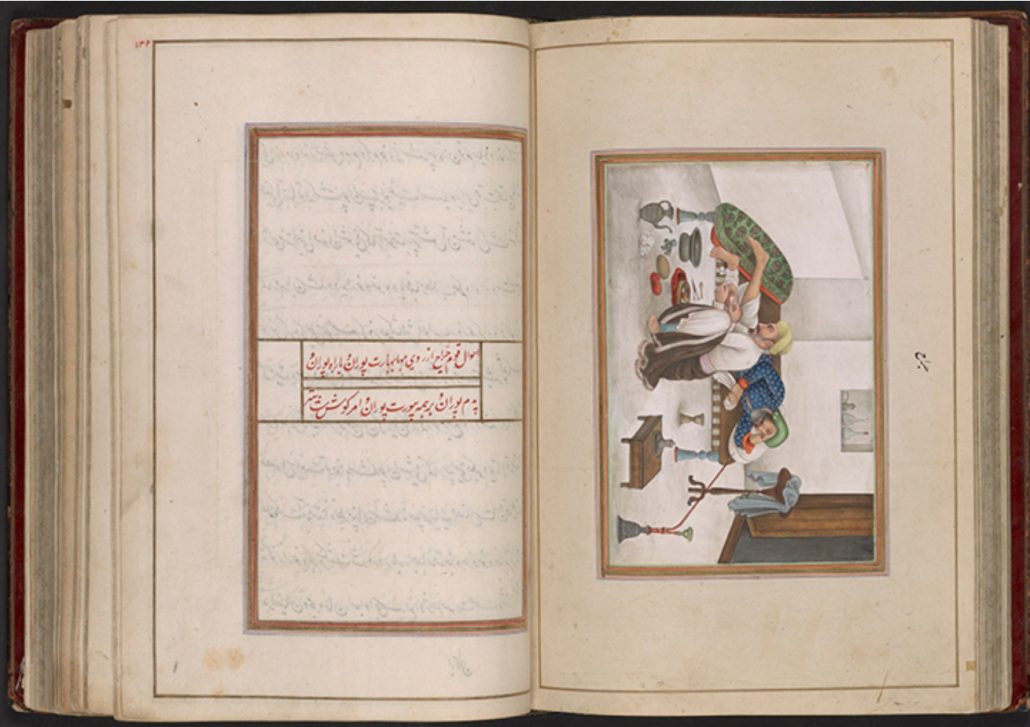
James Skinner. کتاب تشريح الاقوام (Book of Indian Castes and Kinsfolk). India, 1825. Manuscript. Page 2. Rare Book and Special Collections Division, Library of Congress (020.00.00, 20.00.01).
The Study of Medicinal Plants
The study of medicinal plants and their effects on humans has been an age-old tradition in Persian-speaking lands. This publication, written by two commanding officers in the Muhammadzai Pashtun tribal confederacy during the Barakzai period (1826–1973), is a lithographic printing of a pharmacology. By the 1860s, lithographic book printing extended from India to the frontier territories of Afghanistan and was preferred to typographic printing because it better retained the traditional calligraphy. This book, the earliest work in the field of medicine printed in Afghanistan, contains a list of various substances, herbs, flowers, minerals, and potions used for healing purposes in traditional medicine.
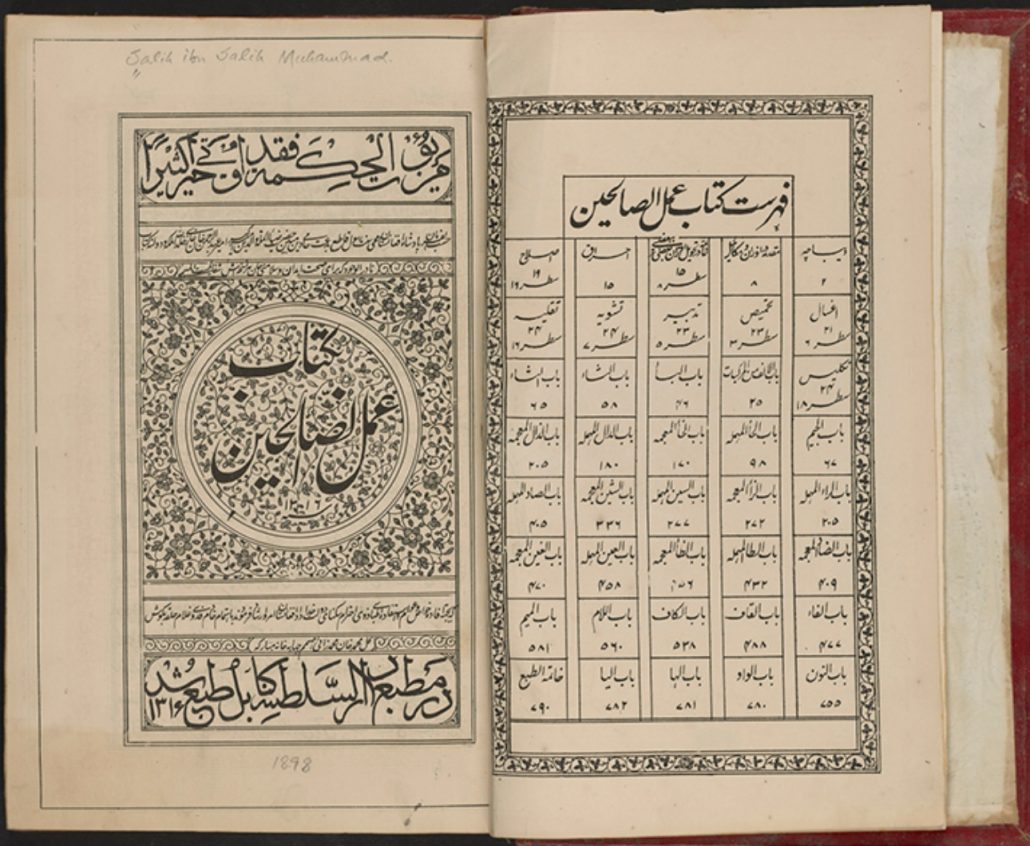
Ṣāliḥ ibn Ṣāliḥ Muḥammad and Gul Muḥammad Khān Muḥammadzāī. کتاب عمل الصالحين (Book of Effects Explanation of Human Anatomy This comprehensive manual in three volumes deals with the human body, ailments, and the medicinal properties of plants. The book was the first detailed handbook of modern medicine in Iran and was probably used for teaching purposes at the Polytechnical College (Dar al-Funun) in Tehran. The first volume contains numerous detailed images illustrating human anatomy, such as this one showing the lower half of the female body. The illustrations are most likely copied from a European book. ‘Abd al-Sabur Mirzā Muhammad. تشريح البشر و توضيح الصور (Pictorial Explanation of Human Anatomy). Tabriz, Iran, 1855–1856. Near East Section, African and Middle Eastern Division, Library of Congress (018.00.00). Geographic Survey of Persian Lands This lithographic book, of which apparently only volumes one, two, and four were published, aims at a comprehensive treatment of the geography of Iran in an alphabetical arrangement. The volume displayed here follows the model of the famous Mu‘jam al-buldān (Dictionary of Countries) compiled by thirteenth-century Arab author Yāqūt. It includes entries from Persian letters “alif” through “te,” including a lengthy entry on Tehran and its history from the early Safavid period through the 1870s. The image on display, most probably copied from a contemporary photograph, shows the Ayvān (or Tāq)-i Kasrā (Palace of Khusraw), which was the legendary palace for the Sassanid kings (224–651) located in the vicinity of modern Baghdad. Muhammad Hasan-Khān. مرآة البلدان ناصرى (Mirror of the Lands, A Geographic Survey of Persian Lands). Volume 1. Tehran: Nasiri Publishing House, 1877. Near East Section, African and Middle Eastern Division, Library of Congress (019.00.00).